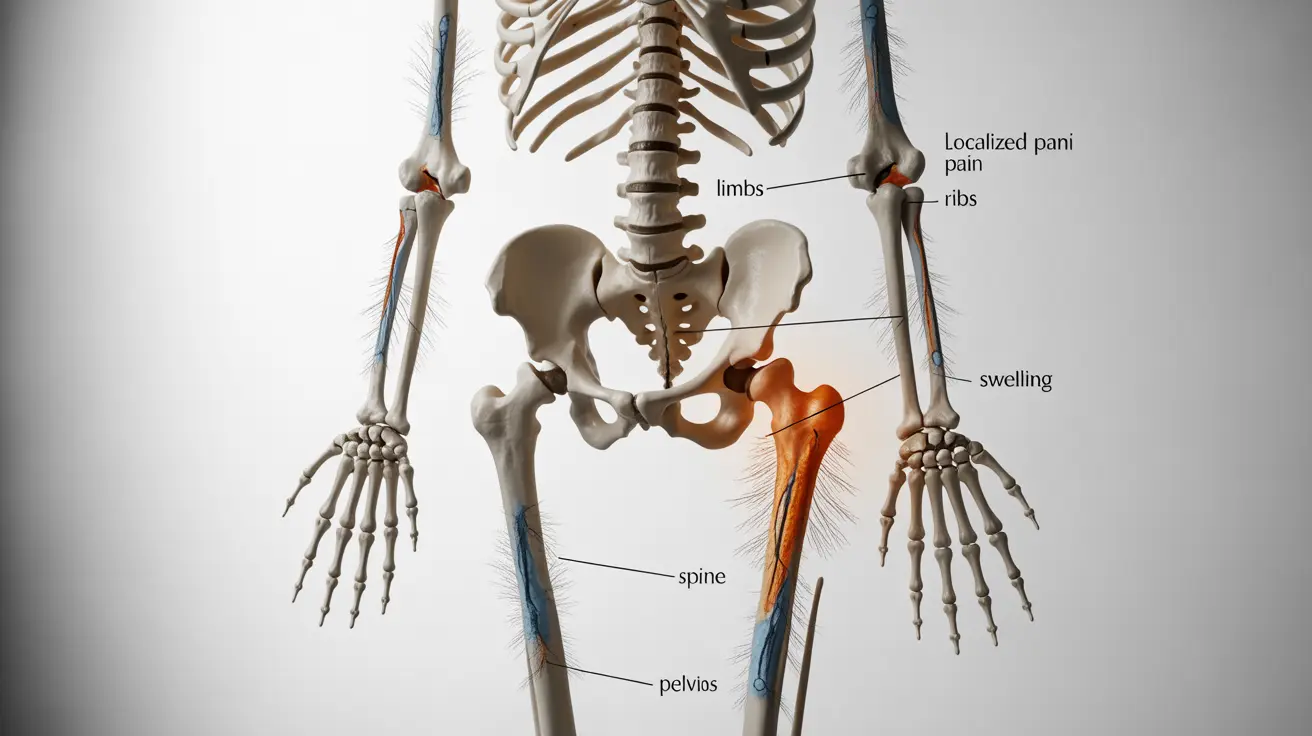Bone cancer pain is a distinct and often challenging experience that can significantly impact a person's quality of life. Whether occurring as primary bone cancer or as a result of cancer spreading to the bones (metastasis), understanding the nature of this pain and its characteristics is crucial for early detection and proper management.
In this comprehensive guide, we'll explore what bone cancer feels like, discuss treatment options, and provide insights into managing symptoms effectively. This information will help you better understand this condition and know when to seek medical attention.
Characteristics of Bone Cancer Pain
Bone cancer pain typically has several distinctive characteristics that set it apart from other types of pain:
- Deep, aching pain that may start mild and become more severe
- Pain that tends to be constant and may worsen at night
- Increased pain with activity or weight-bearing
- Swelling or tenderness around the affected area
- Pain that doesn't improve with rest
Location-Specific Symptoms
The location of bone cancer can significantly influence how the pain feels:
- Limb pain: Often feels deep and may cause limping
- Spine pain: Can cause back pain and potential neurological symptoms
- Ribs: May cause chest pain and difficulty breathing
- Pelvis: Can affect mobility and cause hip pain
Treatment Options for Bone Metastasis
Several effective treatments are available for managing bone cancer and its associated pain:
- Radiation therapy
- Targeted drug therapy
- Bone-strengthening medications
- Surgery in some cases
- Pain management medications
Pain Management Strategies
Comprehensive pain management often involves multiple approaches:
- Prescription pain medications
- Physical therapy
- Alternative therapies like acupuncture
- Nerve blocks in some cases
- Regular monitoring and adjustment of treatment plans
Preventing Complications and Managing Bone Health
Taking proactive steps to maintain bone health is crucial when dealing with bone cancer:
- Regular bone density monitoring
- Proper calcium and vitamin D supplementation
- Safe exercise as recommended by healthcare providers
- Fall prevention strategies
- Regular medical check-ups
Understanding Hypercalcemia
Hypercalcemia is a common complication of bone metastasis that requires careful monitoring:
- Excessive thirst and frequent urination
- Fatigue and weakness
- Confusion or mental changes
- Nausea and loss of appetite
- Muscle and joint pain
Lifestyle Modifications and Support
Making appropriate lifestyle changes can help manage symptoms and improve quality of life:
- Modified exercise routines
- Balanced nutrition
- Stress management techniques
- Support group participation
- Regular communication with healthcare team
Frequently Asked Questions
What does bone cancer feel like, and how does it differ from other types of pain?
Bone cancer pain typically feels like a deep, persistent ache that gradually intensifies over time. Unlike muscular pain or arthritis, it often doesn't improve with rest and may be more severe at night. The pain tends to be localized to specific areas and can be accompanied by swelling or visible changes in the affected area.
What are the most common treatments for bone metastasis, and how effective are they?
Common treatments include radiation therapy, targeted medications, and bone-strengthening drugs. These treatments can be highly effective, with success rates varying depending on the specific case. Many patients experience significant pain relief and improved quality of life with appropriate treatment combinations.
Can bone fractures caused by metastasis be prevented, and what are the best ways to manage bone health?
While not all fractures can be prevented, proper bone health management can reduce risks. This includes taking bone-strengthening medications, maintaining adequate calcium and vitamin D levels, engaging in appropriate exercise, and following fall prevention strategies.
How does hypercalcemia relate to bone metastasis, and what are the symptoms to look out for?
Hypercalcemia occurs when bone metastasis causes excessive calcium release into the bloodstream. Key symptoms include increased thirst, frequent urination, fatigue, confusion, and digestive issues. Regular monitoring of calcium levels is essential for early detection and management.
What lifestyle changes can help alleviate symptoms of bone metastasis, and are there any specific diets recommended?
Beneficial lifestyle changes include gentle exercise, stress reduction techniques, and a balanced diet rich in calcium and vitamin D. Anti-inflammatory foods may help manage pain, while maintaining proper hydration is crucial. Working with a nutritionist can help develop an appropriate dietary plan.




